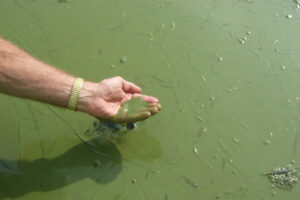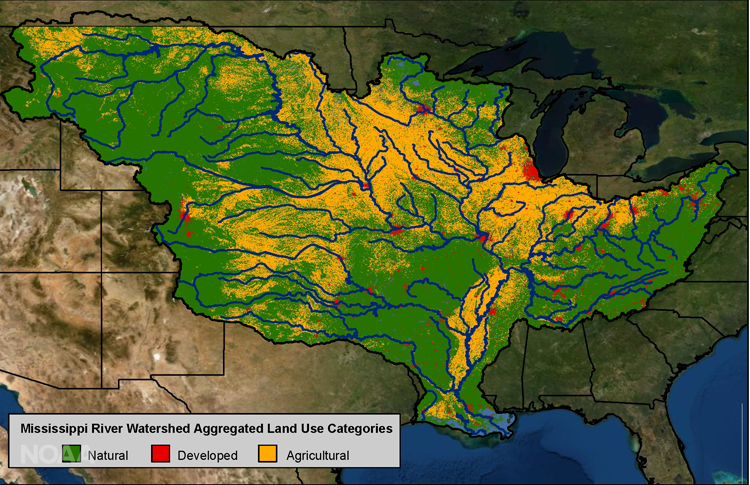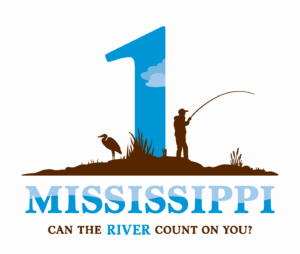2020 NOAA Dead Zone prediction, what it means for your community

“Not only have commercial/recreational fishing began to suffer, but tourism within coastal communities as well. Hotels, restaurants/bars, watercraft recreation, etc. are all feeling the brunt of the dead zone in the Gulf of Mexico” -Louisiana shrimp farmer, Thomas Olander
A Louisiana shrimp farmer, Thomas Olander, has observed the decline of benthic populations firsthand. In an interview with Travis Lux from New Orleans Public Radio, Olander states, “we’re not catching no large shrimp; there’s no explaining this here other than it’s something’s wrong with our water.” Jumbo shrimp are the most highly sought and has the highest market prices. This proves an issue to not only benthic communities but the livelihood of commercial fishermen such as Olander. Thomas Olander also captured pictures on his phone for others to observe the toxic algal blooms lingering at the surface of the dead zone where he normally would fish. Martin Smith, an environmental economist at Duke University, states, “the stress of fleeing can stunt the growth of shrimp; the dead zone causes the average price of shrimp to drop – which means shrimpers like Olander make less money.” Not only have commercial/recreational fishing began to suffer, but tourism within coastal communities as well. Hotels, restaurants/bars, watercraft recreation, etc. are all feeling the brunt of the dead zone in the Gulf of Mexico, with the lack of tourists. The hypoxic waters can be toxic to humans and our pets, which is why it is advisable to avoid the algal blooms.

“During the warm months, these nutrients fuel eutrophication, which causes excessive algal blooms that can degrade aquatic habitats by reducing light levels, destroying habitats (including fragile systems such as coral reefs), and harming marine life by producing toxins, some of which also harm humans” – Stephanie Joyce, Author
Agriculture may be one culprit creating the dead zone, but it is certainly linked to other human activities happening within the watershed as well. Other forms of human activities include, but are not limited to: “land transformation, ground-water drainage, urban stormwater runoff, sewage treatment, or atmospheric emissions through fossil fuel burning and volatilization of agricultural waste.” By not adequately sustaining our activities as humans, we begin to see environmental disturbances, such as the dead zone.

Adapted from the USGS National Land Cover Dataset to show the three major aggregated land use categories across the Mississippi River Watershed: agriculture (yellow), developed (red), and natural (green).
As we have discovered, a majority of the nitrogen and phosphorus, contributing to the toxic algal blooms and leading to hypoxia within the Gulf of Mexico, is sourcing from agricultural and urban runoff. Nitrogen and phosphorus are primarily found within chemical fertilizers, detergents, and human/animal waste (EPA). Simple actions, such as:
- Limiting our fertilizer use on farms and home gardens
- Regularly maintaining sewage treatment facilities and septic tanks
- Using biodegradable chemicals/soaps (detergents)
- Increasing green infrastructure:
- Buffer strips – trees, shrubs, or grasses placed on the edge of fields that border water bodies which absorb nutrients before they enter our waterways.
- Wetlands/floodplains – absorb excessive nutrients, slowly releasing filtered water.
It is also essential that we continue to rely on our local and federal government agencies to provide policies that protect our waters as well. Humans can be problematic by exacerbating the dead zone, but they can also be the solution by limiting their nutrient load and conserving wetlands/floodplains.
– Kristen Mertz,
1 Mississippi IL/MO Outreach Coordinator
Can the River count on you?
Sources:
NOAA: Larger-than-average ‘dead zone’ expected for Gulf of Mexico
The Dead Zones: Oxygen Starved Coastal Waters by Stephanie Joyce
Midwestern Farm Runoff Creates Headache for Louisiana Shrimpers by Travis Lux
Join our
COMMUNITY
And Get a Free E-book!
When you sign up as a River Citizen you’ll receive our newsletters and updates, which offer events, activities, and actions you can take to help protect the Mississippi River.
You’ll also get our free e-book, Scenes From Our Mighty Mississippi, an inspiring collection of images featuring the River.
Step 1
Become a River Citizen
Yes! The River can count on me!
I am committed to protecting the Mississippi River. Please keep me informed about actions I can take to protect the Mississippi River as a River Citizen, and send me my free e-book!, Scenes From Our Mighty Mississippi!
Step 2
LEARN ABOUT THE RIVER
We protect what we know and love. As a River Citizen, you’ll receive our email newsletter and updates, which offer countless ways to engage with and learn more about the River. You can also follow us on Instagram, Facebook, X (Twitter) , and YouTube, where we share about urgent issues facing the River, such as nutrient pollution, the importance of floodplains and wetlands, and bedrock legislation such as Farm Bill Conservation Programs.
Step 3
Take Action
There are many ways you can jump in and take action for a healthy Mississippi River. Our 10 actions list includes simple steps you can take at any time and wherever you are. Check out our action center for current action alerts, bigger projects we are working on, and ways to get involved.


